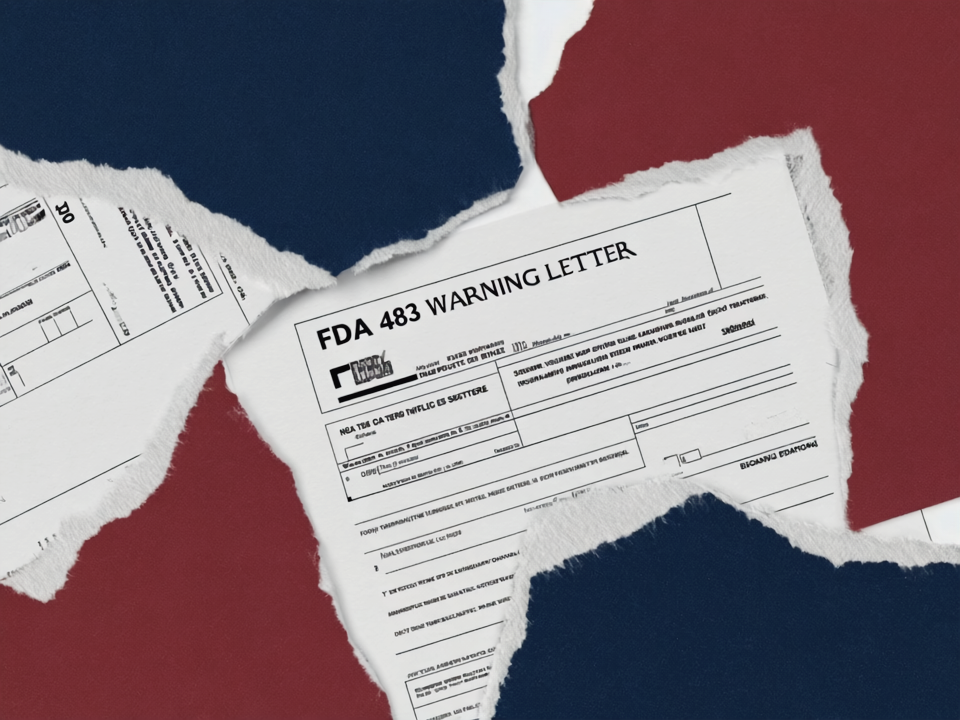by Ravindra Warang
7 minutes
Understanding FDA Form 483 Observations (and How to Respond)
Understand FDA Form 483, common violations, and how to respond effectively to prevent costly enforcement actions and warning letters.

For Karen, the QA manager at a mid-size sterile drug manufacturer, the end of a routine FDA inspection came with a familiar ritual: the investigator sat down across from her, placed a form on the table, and slid it forward. Across the top, it read:
“Form FDA 483 – Inspectional Observations.”
It wasn’t a warning letter — not yet. But Karen knew what it meant: if her company didn’t fix the issues fast and convincingly, a warning letter could be next.
Understanding Form 483 is critical because it’s the earliest and clearest opportunity to correct violations before enforcement escalates.
What is an FDA Form 483?
Form 483 is the FDA’s official way of documenting and communicating inspection findings that may indicate a company has violated federal regulations.
Key points:
- It’s issued at the conclusion of an inspection.
- It lists observations, not formal conclusions of law.
- The form is presented to company management in a closing meeting.
Regulatory basis: FDA investigators are authorized under the Federal Food, Drug, and Cosmetic Act (FD&C Act) to conduct inspections and record any objectionable conditions they observe.
How a Form 483 Differs from a Warning Letter
Think of Form 483 as the yellow light — it’s your chance to stop before the red light of a warning letter.
Common 483 Observations
While every industry has its own nuances, the FDA’s top 483 observations tend to fall into a few categories:
- GMP Failures: Missing written procedures, inadequate training, poor documentation.
- Quality Control Lapses: Incomplete testing, unvalidated methods, missing batch records.
- Sanitation Issues: Poor facility maintenance, pest infestations, inadequate cleaning logs.
- Labeling Problems: Missing required information or incorrect claims.
Example:
In 2023, an injectable drug manufacturer received a 483 citing inadequate sterility testing and missing cleaning records for production equipment — issues that later escalated to a warning letter.
How to Respond to an FDA Form 483
You’re not legally required to respond in writing to a Form 483 — but not doing so is almost always a mistake. A strong, prompt response can prevent the next step: a warning letter.
Step 1: Act Immediately
Start corrective actions the day you receive the observations. Waiting sends the wrong signal.
Step 2: Prioritize Findings
Address the highest-risk observations first — those that could impact public health.
Step 3: Provide Proof
Just like in a warning letter response, evidence is key: SOPs, training logs, photos, test results.
Step 4: Keep the Tone Professional
Don’t argue over technicalities. Focus on solutions and preventive measures.
Step 5: Follow Through
Implement systemic fixes — not just band-aid solutions. The FDA will check on them.
Using a 483 as a Compliance Tool
The best companies treat a Form 483 as free consulting from the regulator.
Yes, it’s stressful, but it’s also the clearest roadmap you’ll ever get on how to align your operations with FDA expectations.
Karen’s company took this approach: they addressed every observation within 30 days, invited the FDA back for a re-inspection, and avoided a warning letter altogether. Their takeaway?
“The 483 didn’t set us back — it actually made our quality systems stronger.”
Conclusion
An FDA Form 483 isn’t the end of the world. It’s an opportunity. Companies that respond quickly, completely, and transparently often close out the issue before it becomes public.
But companies that ignore or downplay the observations? They’re the ones you see later in the FDA’s warning letter database.
If you ever receive a 483, treat it as your best chance to prove your commitment to compliance before the stakes get higher.




